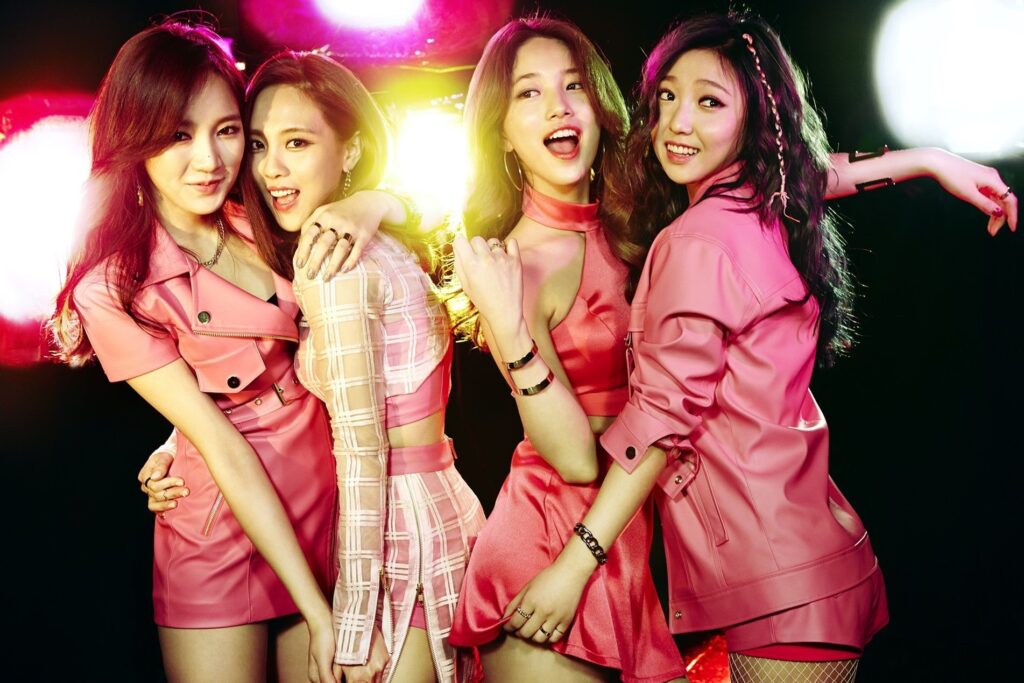Table of Contents: 2nd Generation Kpop Girl Groups
The second generation of K-pop girl groups played a crucial role in shaping the global K-pop industry. Emerging in the mid-2000s, these groups introduced a more polished, diverse, and internationally appealing sound that paved the way for the genre’s global success. If you’re curious about the groups that laid the foundation for today’s K-pop dominance, this article will take you through the most iconic 2nd generation Kpop girl groups and their lasting impact.
What Defines a 2nd Generation K-pop Girl Group?
The second generation of K-pop is generally considered to have begun in the mid-2000s and lasted until the early 2010s. These groups benefited from the rise of social media, YouTube, and international music streaming, helping K-pop gain recognition beyond South Korea. They introduced synchronized choreography, genre-blending music, and distinct concepts that set the stage for future generations.
Legendary 2nd Generation K-pop Girl Groups
1. Girls’ Generation (SNSD)
One of the most successful K-pop girl groups of all time, Girls’ Generation (SNSD) debuted in 2007 under SM Entertainment. They are best known for their hit songs like Gee, Genie, and I Got a Boy. Their catchy tunes, synchronized dance moves, and powerful vocals cemented their status as legends in K-pop history.
2. Wonder Girls
Debuting in 2007 under JYP Entertainment, Wonder Girls became the first K-pop group to enter the Billboard Hot 100 with their viral hit Nobody. Their retro-inspired music and international promotions helped popularize K-pop outside of Asia.
3. 2NE1
YG Entertainment’s powerhouse girl group, 2NE1, debuted in 2009 with a fierce and unique style. Known for their edgy fashion and confident performances, they produced hits like I Am the Best, Fire, and Come Back Home. Their influence extended beyond K-pop, inspiring future artists with their strong female empowerment messages.
4. Kara
Formed by DSP Media in 2007, Kara gained immense popularity in both South Korea and Japan. With hits like Mister and Step, they helped bridge the K-pop and J-pop markets, making them one of the most successful groups of their era.
5. T-ara
Debuting in 2009 under MBK Entertainment, T-ara became famous for their catchy songs and viral dance moves. Roly-Poly, Bo Peep Bo Peep, and Lovey-Dovey solidified their place in K-pop history.
6. f(x)
Known for their experimental music and bold fashion, f(x) debuted under SM Entertainment in 2009. Songs like Electric Shock, Hot Summer, and 4 Walls showcased their unique sound and concept-driven artistry.
7. Secret
Debuting in 2009 under TS Entertainment, Secret gained popularity with their retro and jazzy concepts. Known for hits like Magic, Madonna, and Shy Boy, they successfully transitioned from a sexy image to a cute and vintage-inspired style, showcasing their versatility in the K-pop industry.
8. Miss A
Under JYP Entertainment, Miss A debuted in 2010 with their smash hit Bad Girl Good Girl, which became the fastest debut song to win on a Korean music show. Their sleek and powerful performances in songs like Goodbye Baby and Hush set them apart as one of the top girl groups of their generation.
9. Sistar
The “Queens of Summer,” Sistar debuted in 2010 under Starship Entertainment. They were known for their fun, energetic summer anthems like Touch My Body, Alone, and Loving U, solidifying their legacy as one of the best-selling K-pop girl groups.
10. Apink
Apink debuted in 2011 under IST Entertainment with an innocent and fresh concept that contrasted with the sexy trends of the time. Their hit songs like NoNoNo, Mr. Chu, and LUV made them one of the longest-running girl groups with a dedicated fanbase.
Impact of 2nd Generation Girl Groups
These groups were instrumental in shaping modern K-pop’s global appeal. They pioneered:
- Concept Variety: From SNSD’s classic girl-next-door image to 2NE1’s fierce and rebellious aura, 2nd gen groups set the standard for diverse group concepts.
- International Expansion: Wonder Girls and Kara made significant strides in the U.S. and Japan, respectively, opening doors for future K-pop artists to go global.
- Innovative Music & Choreography: Their songs blended pop, R&B, and electronic dance music, setting new trends in the industry.
The Legacy of 2nd Generation K-pop Girl Groups
Though most of these groups have disbanded or are on hiatus, their impact continues to influence today’s K-pop landscape. Many 3rd and 4th generation girl groups cite them as inspirations, and their songs remain beloved classics.
Whether you’re a longtime K-pop fan or a newcomer, exploring 2nd generation girl groups is a journey into the history of K-pop’s golden era. Their music, fashion, and performances continue to shape the industry, proving that they are truly timeless icons.



